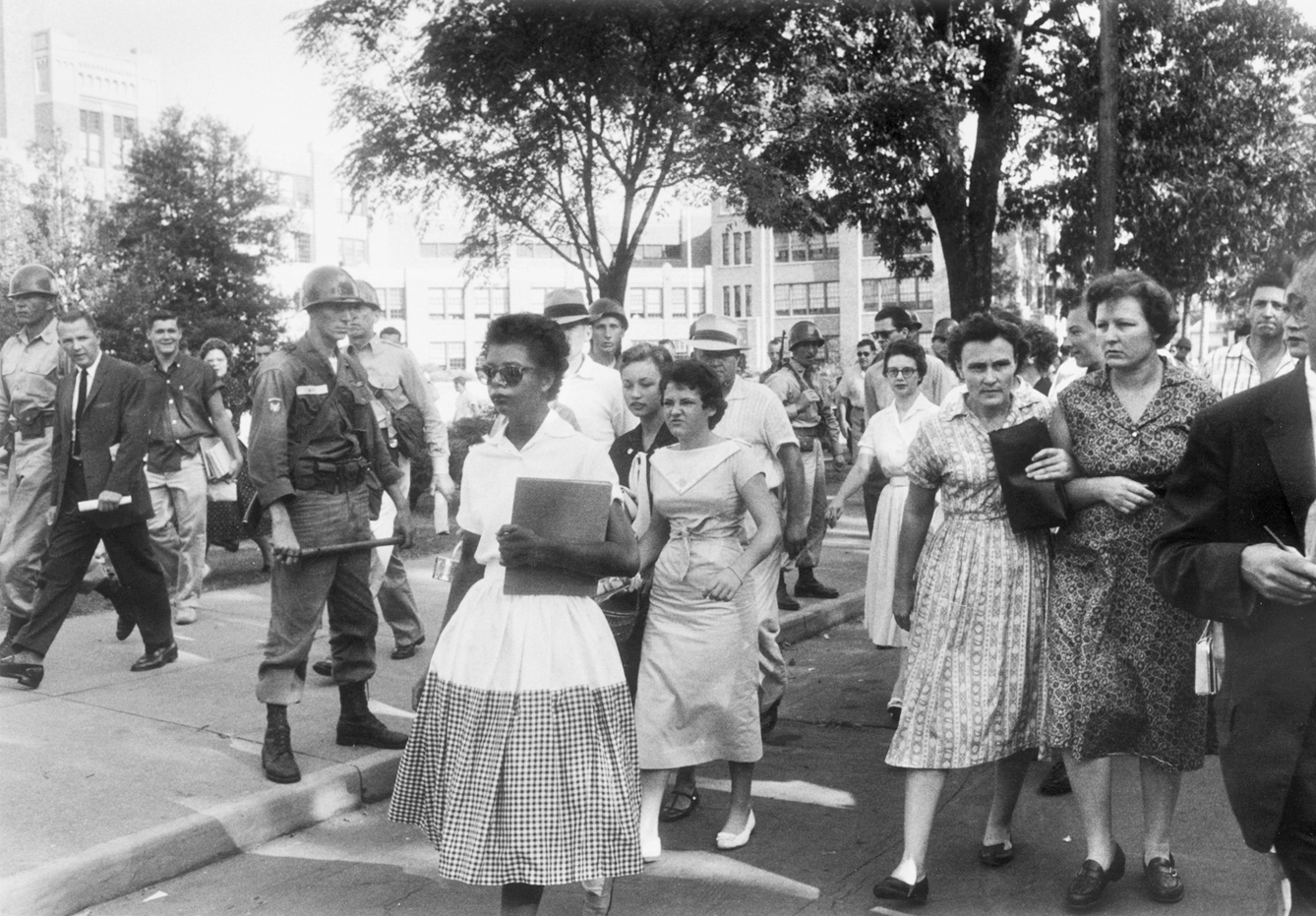African Americans Challenge the Supreme Court and the President.
Printed Page 757 Chapter Chronology
African Americans Challenge the Supreme Court and the President. Several factors spurred black protest in the 1950s. Between 1940 and 1960, more than three million African Americans moved from the South into areas where they had a political voice. Black leaders made sure that foreign policy officials realized how racist practices at home tarnished the U.S. image abroad and handicapped the United States in its competition with the Soviet Union. The very system of segregation meant that African Americans controlled certain organizational resources, such as churches, colleges, and newspapers, where leadership skills could be honed and networks developed.
The legal strategy of the major civil rights organization, the National Association for the Advancement of Colored People (NAACP), reached its crowning achievement with the Supreme Court decision in Brown v. Board of Education in 1954, which consolidated five separate suits. Oliver Brown, a World War II veteran in Topeka, Kansas, filed suit because his daughter had to pass by a white school near their home to attend a black school more than a mile away. In Virginia, sixteen-year-old Barbara Johns initiated a student strike over wretched conditions in her black high school, leading to another of the suits joined in Brown. The NAACP's lead lawyer, future Supreme Court justice Thurgood Marshall, urged the Court to overturn the "separate but equal" precedent established in Plessy v. Ferguson in 1896 (see chapter 21). A unanimous Court, headed by Chief Justice Earl Warren, declared, "Separate educational facilities are inherently unequal" and thus violated the Fourteenth Amendment.

Ultimate responsibility for enforcement of the decision lay with President Eisenhower, but he refused to endorse Brown. He also kept silent in 1955 when whites murdered Emmett Till, a fourteen-year-old black boy who had allegedly whistled at a white woman in Mississippi. Reflecting his own prejudice, his preference for limited federal intervention in the states, and a leadership style that favored consensus and gradual progress, Eisenhower kept his distance from civil rights issues. Such inaction fortified southern resistance.
Brown v. Board of Education
1954 Supreme Court ruling that overturned the "separate but equal" precedent established in Plessy v. Ferguson in 1896. The Court declared that separate educational facilities were inherently unequal and thus violated the Fourteenth Amendment.
In September 1957, Governor Orval Faubus sent Arkansas National Guard troops to block the enrollment of nine black students in Little Rock's Central High School. Later, he allowed them to enter but withdrew the National Guard, leaving the students to face an angry white mob. "During those years when we desperately needed approval from our peers," Melba Patillo Beals remembered, "we were victims of the most harsh rejection imaginable." As television cameras transmitted the ugly scene, Eisenhower was forced to send regular army troops to Little Rock, the first federal military intervention in the South since Reconstruction. Paratroopers escorted the "Little Rock Nine" into the school, but integration and resistance to it continued across the South. (See "Documenting the American Promise.")
School segregation outside the South was not usually sanctioned by law, but northern school districts separated black and white students by manipulating neighborhood boundaries and with other devices. Even before Brown, black parents in dozens of northern cities challenged the assignment of their children to inferior "colored" schools. While their protests reaped some successes, the structure of residential segregation, often supported by official action, made school segregation a reality for African Americans in both the North and the South.

Eisenhower ordered the integration of public facilities in Washington, D.C., and on military bases, and he supported the first federal civil rights legislation since Reconstruction. Yet the Civil Rights Acts of 1957 and 1960 were little more than symbolic. Baseball star Jackie Robinson spoke for many African Americans when he wired Eisenhower in 1957, "We disagree that half a loaf is better than none. Have waited this long for a bill with meaning — can wait a little longer." Eisenhower appointed the first black professional to his White House staff, but E. Frederick Morrow confided in his diary, "I feel ridiculous ...trying to defend the administration's record on civil rights."